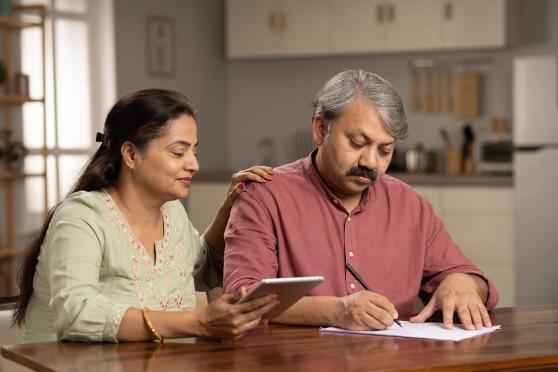The colon cancer screening tests that can save your life
You may be surprised by how many screening options there are now. And some don’t even require a doctor’s visit. Here’s the lowdown on the types of tests that can detect cancer early — and potentially save your life.

Colon cancer is one of the most diagnosed cancers in both men and women, but not everyone is up to date on their screenings. And that’s especially true for younger adults, according to a 2020 report by the American Cancer Society (ACS).
The report estimates that 12 percent of new colorectal cancer cases will be diagnosed in people under the age of 50 — a rate that has been steadily increasing for the past few decades. At the same time, the report notes that colorectal cancer cases in individuals over age 50 are decreasing.
Still, that doesn’t mean you shouldn’t be as concerned with screenings if you’re over 50. Early screening for colon cancer is the best way to reduce your risk – at any age.
“The whole point of cancer screening is to find problems early, when there’s more we can do for patients to keep them healthy, active, and alive,” says Robert F. Raspa, M.D., a spokesperson for the American Academy of Family Physicians.
When to begin colorectal cancer screenings
Because cases are showing up earlier than age 50, the ACS and the U.S. Preventive Services Task Force both recommend colorectal cancer screenings now begin at age 45.
Those with a higher risk for colon cancer because of family or personal history, including colorectal cancer or adenomatous polyps (growths in the lining of the rectum or colon), Crohn’s disease, or ulcerative colitis, may need to start screenings sooner. Talk to your doctor about your health history and what your risk level is.
If you’ve been putting off a recommended colonoscopy and are at average risk, Dr. Raspa suggests letting your doctor know your concerns and asking if you might be a good candidate for one of the less invasive screening tests described below.
What are my options?
There are two main types of screening tests now: stool-based and visual. The first type is noninvasive — your stool is simply checked for signs of cancer. Visual exams such as a colonoscopy look at the structure of your colon or rectum for cancer.
Both types have their pros and cons, including differences in how often they need to be performed. And some might be a better fit for you than others. For example, if you are in a higher-risk group, your doctor may recommend a full colonoscopy, while those with average risk may be able to use the noninvasive stool tests.
Though if results for tests other than a colonoscopy come back positive, a full colonoscopy is recommended to confirm — or rule out — those findings. Talk to your doctor about which test is right for you and when it should be performed.
Stool-based tests
Let’s be direct: Poop can tell doctors a lot about your colon health. Some of the following stool-based screening tests can detect signs of cancer and harmful polyps in the colon:
- Fecal occult blood test (FOBT), fecal immunochemical test (FIT), and stool DNA test (also known as the multitargeted stool DNA test, or MT-sDNA): All three of these noninvasive screenings test for blood in the stool, which can be a sign of polyps or cancer. The MT-sDNA test also detects cancerous cells. The tests require no prep, but some foods or drugs can affect the results of the FOBT, so discuss dietary restrictions with your doctor. You’ll collect a bowel movement and send it in supplied packaging to the lab. If the screening finds blood or altered cells in the stool, you will be offered more tests, such as a colonoscopy, to determine the cause.
- Recommended frequency by the ACS: Every year for FOBT and FIT; every three years for MT-sDNA.
Visual tests
Many times, however, your doctor wants a close-up look at your colon. Here are some direct visualization options.
- Colonoscopy: This exam is the most common — and most thorough — type of screening. That’s why it remains the gold standard in colon cancer screening. It usually requires pre-screening prep using laxatives to empty the bowels before the test. During the test, you’ll be given anesthesia. Then a small, flexible tube with a camera at the end (called a scope) is inserted into the colon via the rectum to examine the full length of the colon. One big benefit of this exam is that suspicious-looking growths can be removed and biopsied during the test.
- Recommended frequency by the ACS: Every 10 years, as long as results are negative.
- Flexible sigmoidoscopy: This screening uses a flexible, narrow tube with a camera attached to the end and visualizes the lower part of the colon (not the entire colon, as a colonoscopy does).
- Recommended frequency by the ACS: Every five years.
- Computed tomographic colonography (virtual colonoscopy): A CT scan analyzes your abdominal organs, as opposed to a physical scope being inserted. (Note: Pre-procedure prep is still needed ahead of this screening.)
- Recommended frequency by the ACS: Every five years.
No matter which option you and your doctor choose, know that you’re taking a giant step in protecting yourself, your health, and your future.


